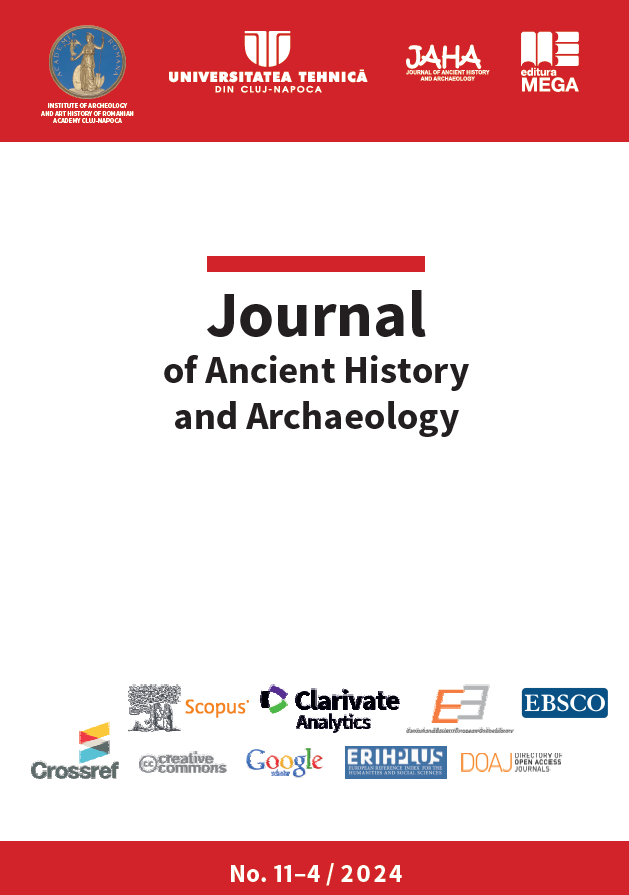CAMP DRESS OR PARADE ARMOUR? AN EQUESTRIAN OFFICER COMMEMORATED ON A FUNERARY RELIEF FROM BRÂNCOVENEȘTI
CAMP DRESS OR PARADE ARMOUR? AN EQUESTRIAN OFFICER COMMEMORATED ON A FUNERARY RELIEF FROM BRÂNCOVENEȘTI
Author(s): Dávid PetruțSubject(s): History, Archaeology, Cultural history, Ancient World
Published by: Editura Mega Print SRL
Keywords: Roman Dacia; limes; funerary commemoration; auxiliary fort; equestrian officer;
Summary/Abstract: Research undertaken in the past 35 years has shown that the depiction of soldiers in muscle cuirass (lorica, thorax), pteruges and paludamentum (in addition to other elements), is linked to the funerary commemoration of equestrian individuals who either fulfilled one or more posts within the militia equestris at one point during their lives or died while holding such a position. These members of the equestrian order chose to be commemorated in this way out of the desire to emphasize their service and devotion to the state and to the emperor himself domi militiaeque i.e. ‘home and abroad’. As such, these monuments are important sources for the social history of the Roman world and implicitly Roman Dacia, even if they are detached from their original epitaph, the commemorated persons retaining their anonymity. One of the most intriguing examples of full body armour representations from Roman Dacia comes from Brâncovenești in Mureș County (Hu: Marosvécs). Even though a detailed description of the relief was published over 30 years ago, apart from some elusive hints to its significance, and despite the numerous interesting questions it poses, no comprehensive analysis has been undertaken so far. The present paper intends to do justice to the relief from Brâncovenești by giving a long overdue detailed analysis of the piece.
Journal: Journal of Ancient History and Archaeology
- Issue Year: 11/2024
- Issue No: 4
- Page Range: 224-233
- Page Count: 10
- Language: English

